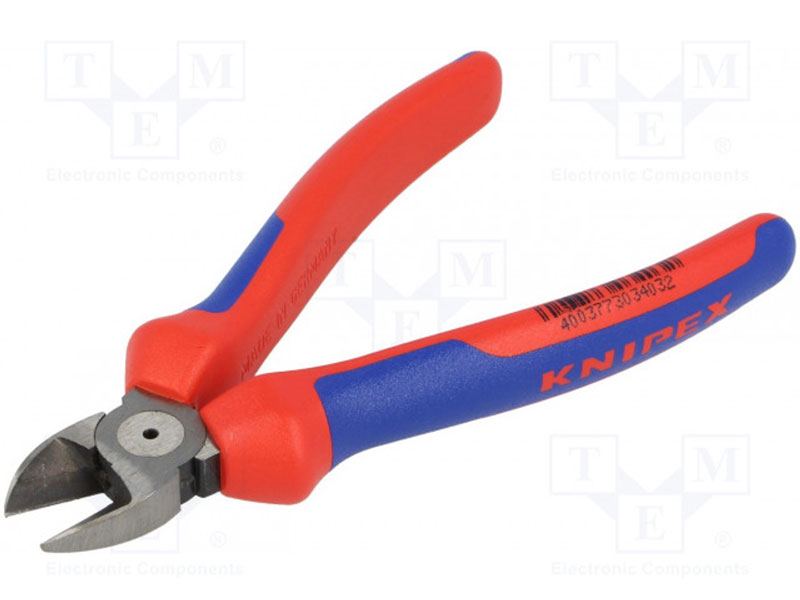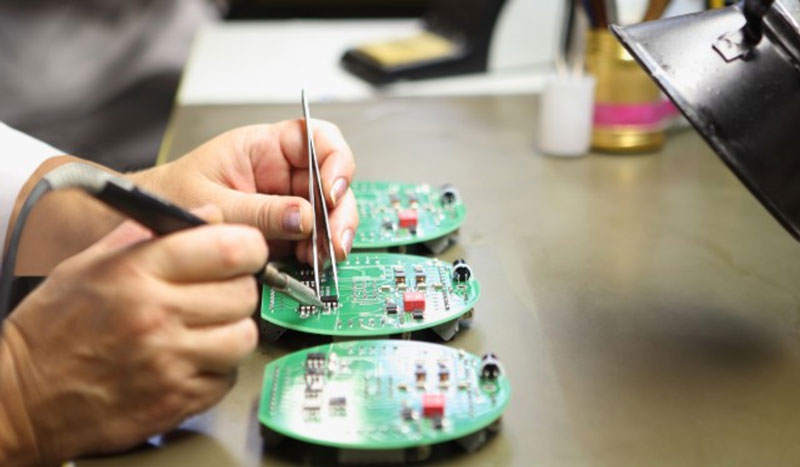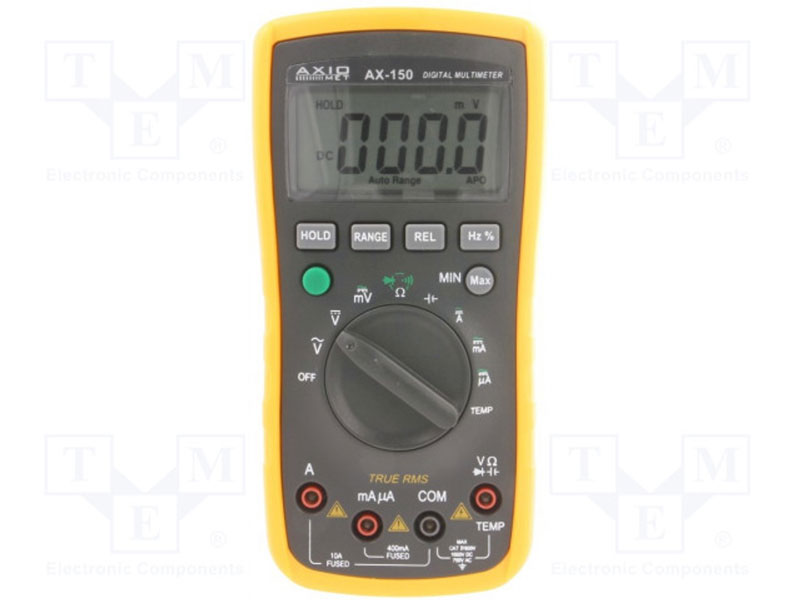Equipping an efficient electrical workbench
Having the right range tools and equipment available on an electrical workbench is essential in order to achieve the desired levels of quality and productivity. Compromising on the number, type or quality of tools is, quite simply, a false economy, regardless of whether the application is assembly, test or repair.
Working with electrical wire sounds simple, but in truth, without the right tools it can be laborious and inconsistent. Wire, by its nature, is flexible and does not conform to the micron level tolerances found in the mechanical component sector. As a consequence, tools must be accommodating in their application and practicality, something generally only found in branded, rather than budget options.
Tools for cutting wire are a primary consideration when setting up any electrical workbench. Such tools extend from simple snips, through diagonal side cutters, to plier-cutter combinations. In all cases, the goal, to cut the wire cleanly without leaving strands, burrs or ragged ends, is a derivative of the material used for the blades.
Alloy steel is adequate for many tasks, but to ensure longevity and quality of output, numerous companies working with wire are now opting for blade materials such as chrome vanadium steel. Vanadium steel is strong, resistant to wear and tear, and prevents corrosion.
Another consideration is the finish on the cutting blades. High end diagonal side cutters feature smoothly ground cutting edges that have been induction hardened. While for those seeking out the transfer of extra leverage to the head, a forged-on pivot is sure to prove effective. Knipex is an example of a brand that can meet such demands, featuring precision-ground chrome vanadium blades hardened to 64 HRc, for example.

Photo caption: High end diagonal side cutters feature smoothly ground cutting edges
The choice of a chamfer (for all wire classes) or no chamfer (for soft materials) must also be made. However, some cutting pliers, such as certain models in the Bahco range, offer the best of both worlds: softer materials like copper and insulated plastic wire can be cut at the tip, while a chamfer that progresses along the edge is utilised to cut harder materials further down the blade.
With the wire cut, the next step is usually to strip it. Here, the specific application dictates selection. If the electrical workbench in question is for a dedicated task, then simply select strippers according to the wire type being processed, be it round, flat, co-axial, multi-core or another form. However, if the workbench is set to operate in a varied environment where the nature of the next job is unknown, then versatility is key. In such cases, ensure the tool is able to strip everything from the smallest gauge wire to large lamp leads.
When it comes to crimpers, focus again shifts to tool material. Most common is carbon or alloy steel, although chrome vanadium and other hardened steels are available if high end quality is the goal, regardless of whether for push-on connectors, terminals or wire end ferrules.
Stripper and crimper brand examples meeting suitably high specifications include Jokari and Weidmüller.
Another essential for an electrical workbench is precision tweezers, particularly if the work entails PCB or component-level operations. The first step here is to select the type of point best suited to the application. Although straight or curved blades are common picks, it is also possible to choose specially elongated, narrow or wide shapes, while tip shapes extend from sharp or rounded, to flat or bent, and plenty more besides.
Tweezer material also influences selection. While stainless steel is the most common due to its corrosion resistance and tip hardness, further options include carbon steel, chrome-nickel steel and titanium, to list but a few.
Anyone seeking high quality tweezers that offer reliability, ergonomics, longevity and optimal execution of the intended tasks, would do well to assess the Ideal-Tek range.
Ideal-Tek is also a go-to resource for a device that often complements tweezers, namely vacuum pick and place tools. Here, companies should seek out battery-free handheld vacuum pens designed for the safe pick-up of SMD components during assembly, test and rework processes. Many of the latest designs offer fountain-pen dimensions to easily grab, lift and place components in complete safety, aided by a powerful internal piston and a full ESD protection. A choice of tips is often available to suit any size of SMD component.
Of course, no electrical workbench would be complete without a soldering iron. Picking a soldering iron depends largely on its intended purpose. If the soldering iron is to be used for wires, especially those with a larger cross-section, then it is best to choose a tool with high power (over 100W) and a large soldering tip. However, for soldering electronic components, choose a soldering gun (with the right tip) or a soldering pencil.

Photo caption: Selecting a soldering iron depends largely on its intended application
Soldering tips are available in various sizes and shapes. The most popular are chisel, mini-spoon, hoof and conical. The size of the soldering tip should be matched to the soldered element - the larger the soldered element, the bigger the soldering tip should be to transfer heat more effectively. The shape of the tip, in turn, affects the distribution of solder on the surface.
Quality soldering iron brands such as Weller, Thermaltronics and Solder Peak can meet the needs of virtually all electrical workbenches. Indeed, the same manufacturers are also renowned for product performance when it comes to de-soldering pumps, sometimes referred to as solder suckers.
Any de-soldering pump must feature an efficient plunger able to suck up the molten solder before it has the chance to solidify. Further desirables include: a durable body that can withstand plenty of heat; a compact, lightweight design for ergonomics and comfort; and durable tips.
The next handy companion for workbench efficiency is the digital multimeter. As might be imagined, the choice of features on such devices is little short of mind boggling. On the wish list of many is high count resolution, a 10A range, better than one percent on DCV, a high ohm range, a robust diode test, and low burden voltage in the A and mA ranges. Those seeking such specifications should take a look at brands such as Axiomet.

Photo caption: A digital multimeter is a handy companion for efficient workbenches
Sure enough, most professional digital multimeters today offer additional functions such as frequency, capacitance and temperature measurement, but high end products can provide a host of further features, including maximum and minimum values, duty cycle, data logging, true RMS and a backlight.
Other than those covered here, it goes without saying there are many additional tools and devices available that can add even more capability to electrical workbenches, not least screwdrivers, wrenches, measuring tools, inspection tools, glue guns and power tools, as well as health and safety essentials such as ESD equipment and fume extractors.
In all cases, the advice is to opt for quality over cost, and the best way to ensure quality is to pick a reputable brand, which will pay significant dividends in the long run. For instance, imagine a situation where a branded connector fails, leading to a dispute. As part of the failure analysis, one of the principal questions will be whether a branded crimping tool was used? In short, using a branded tool means users benefit from attributes such as quality, longevity and ergonomics.
Sure enough, most professional digital multimeters today offer additional functions such as frequency, capacitance and temperature measurement, but high end products can provide a host of further features, including maximum and minimum values, duty cycle, data logging, true RMS and a backlight.
Other than those covered here, it goes without saying there are many additional tools and devices available that can add even more capability to electrical workbenches, not least screwdrivers, wrenches, measuring tools, inspection tools, glue guns and power tools, as well as health and safety essentials such as ESD equipment and fume extractors.
Image credits: TME


